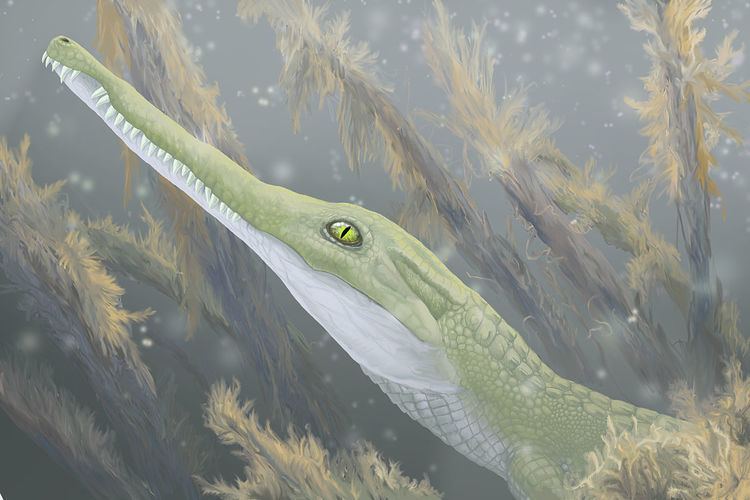Rank Family | Class Reptilia Phylum Chordata | |
 | ||
Similar Batrachomimus, Atoposauridae, Shamosuchus, Pliogonodon | ||
Paralligatoridae is an extinct family of neosuchian crocodyliforms that existed during the Jurassic and Cretaceous periods. It includes the genera Paralligator, Brillanceausuchus, Shamosuchus, Sabresuchus, Rugosuchus, Batrachomimus and Wannchampsus, as well as yet-unnamed "Glen Rose form".
Evolution
Phylogenetic analyses of crocodyliforms find Paralligatoridae to nest within Neosuchia, a large clade (evolutionary grouping) that also includes modern crocodylians. In crocodyliform phylogeny, paralligatorids are usually found near the base of Neosuchia, outside the clade Eusuchia, which includes crocodylians and their closest relatives. Below is a cladogram from Montefeltro et al. (2013) showing the phylogenetic relationships of Paralligatoridae:
Paralligatorids have a wide geographic and temporal range. The first known paralligatorids, Shamosuchus and Rugosuchus, are both from the Cretaceous of Asia (the Late Cretaceous of Mongolia and the Early Cretaceous of China, respectively), meaning that they were initially thought to have had a restricted distribution. The discovery of Batrachomimus from the Late Jurassic of Brazil extended the fossil record of Paralligatoridae back by 30 million years and gave it a wide distribution across both of the two main supercontinents of the Mesozoic: Laurasia in the north and Gondwana in the south. The most likely explanation for why paralligatorids existed in both eastern Laurasia and western Gondwana is that they radiated eastward across both the Tethys Ocean and the Turgai Sea. Another possible explanation is that the first paralligatorids lived before the breakup of Laurasia and Gondwana when both were part of the larger supercontinent Pangaea, and when Pangaea broke apart, two populations of paralligatorids - a western population including Batrachomimus and an eastern population including Shamosuchus and Rugosuchus - were separated. Although the Pangaean breakup hypothesis fits well with the high degree of endemism seen in other crocodyliform groups like Notosuchia, the seaway dispersal hypothesis better fits with the wide and mostly uniform distribution of neosuchians during the Jurassic and Cretaceous.
